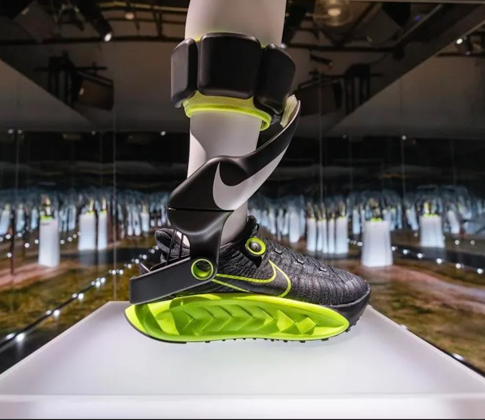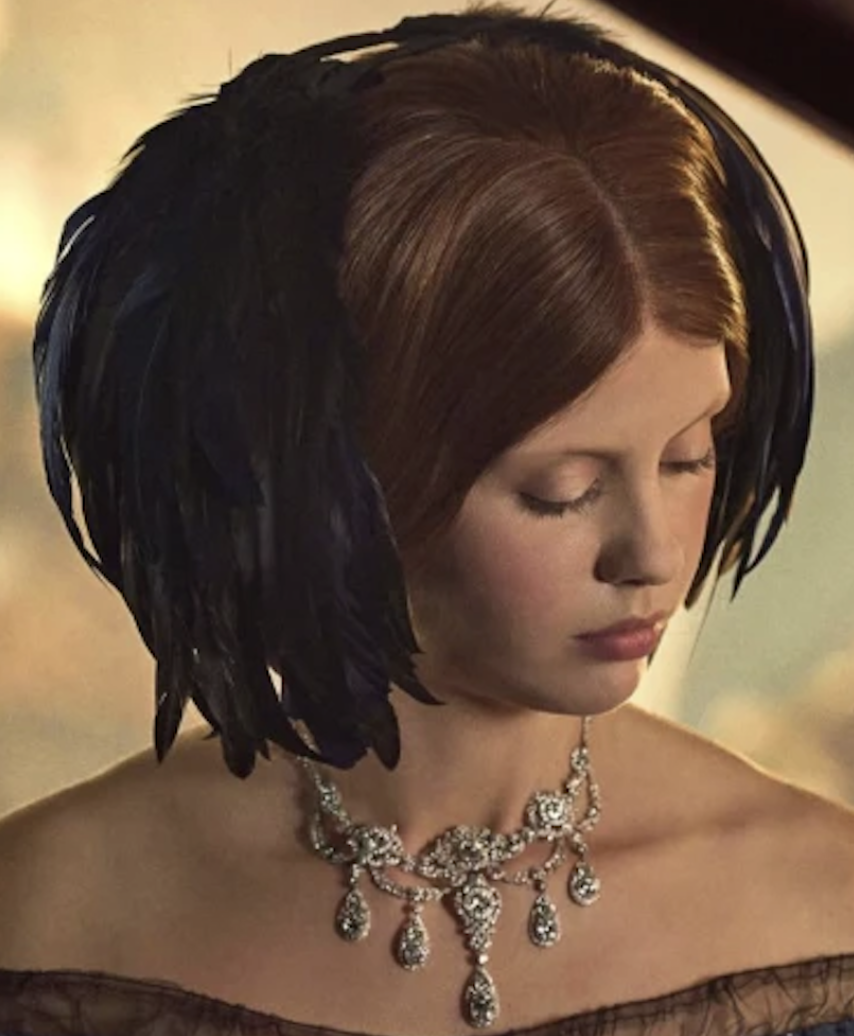
Image credit: Netflix, 2025
Tiffany & Co.’s groundbreaking partnership with Netflix heralds a significant shift in the world of luxury brands, particularly in their quest to engage younger audiences. This collaboration, which blurs the boundaries between high-end jewelry, movies, and storytelling, is not just about product placement. It’s a pioneering approach to luxury marketing. This partnership is Tiffany’s first-ever movie collaboration, according to Jing Daily (2025). It turns its heritage pieces into characters of their own. But underneath the beauty and nostalgia is a bigger question: is this a model for how luxury brands should market themselves in the future, or a risky way to combine art and business?
The Growth of Storytelling as a Strategy
The evolution of luxury marketing is evident in its shift from selling dreams to evoking emotions. Tiffany’s involvement in Frankenstein is not a mere coincidence; it’s a meticulously planned part of the narrative. The brand is leveraging the cinematic lens to showcase its heritage as timeless art, forging emotional connections with its jewelry through mystery and creative storytelling.
This fits with a larger industry trend: telling luxury stories through entertainment. Brands are getting into cultural stories, movies, streaming, gaming, and even virtual fashion, rather than just relying on flashy ads.
When Brands Start Telling Stories
1. Louis Vuitton x League of Legends: In 2019, Louis Vuitton made in-game skins and a real-life capsule collection for League of Legends, a global esports phenomenon. The move got the brand in front of millions of Gen Z customers and showed how digital spaces could change what luxury means.
2. Balmain x Barbie: Balmain’s 2022 partnership with Barbie turned nostalgia into fashion money. Balmain made itself look like a brand that knows both heritage and pop culture by releasing limited-edition digital NFTs and pink-themed collections. Tiffany now does the same thing with its own Netflix debut.
3. Cartier in Emily in Paris: Cartier’s minor appearances in Emily in Paris weren’t just product placements; they also added to the brand’s long-standing connection to Parisian style. The show became a global stage for aspirational lifestyle marketing, naturally connecting jewelry to the character’s romantic Parisian identity.
4. Prada x Hollywood Cinema: Prada has used movies as a way to promote its brand for a long time. The house’s designs have been in award-winning movies from The Great Gatsby (2013) to Blonde (2022), giving it a cinematic aura that adds to its cultural cachet beyond fashion.
The Tiffany Play: Where Heritage Meets Hollywood
The Netflix partnership is all about bringing Tiffany & Co. back to life without losing its history. The jeweler’s archives date back almost 200 years, but LVMH’s recent rebranding efforts aim to link this history to modern culture. Tiffany connects old craftsmanship with modern storytelling by putting its heritage necklace in Frankenstein. This makes its jewelry more than just accessories; it is an artifact of storytelling, people who care more about authenticity, craftsmanship, and emotion than about branding for the sake of strategy.
This movie-like style also aligns with LVMH’s broader marketing strategy of blending luxury with cultural entertainment. LVMH brands have learned how to make things that are visible more desirable. For example, Dior tells stories through documentaries, and Louis Vuitton works with creative people, such as artists and filmmakers, to create cultural experiences that elevate its brand’s desirability.
The Risks Behind the Glamour
While Tiffany’s foray into cinema is bold, it’s not without its calculated risks. Luxury brands walk a fine line between art and popularity. If storytelling collaborations become too commercial or commonplace, they risk diluting their exclusivity, a cornerstone of luxury branding. Also, it’s hard to have creative control in media partnerships. The way a product is framed, lit, or linked to characters can shape how people think about the brand long after the movie ends. For instance, Sex and the City made Manolo Blahnik and Fendi more popular, but the over saturation made some high-end items feel too familiar.
From Screen to Store: Experience is the New Luxury
Tiffany’s move shows that luxury marketing is changing in a bigger way, from transaction to transformation. People don’t want to buy jewelry anymore; they want to know the story behind it. That’s why working with entertainment platforms is so effective: they take people to a world instead of a store. Someone who is fascinated by Mia Goth’s necklace may not only like how it looks, but also what it means to them.
This is luxury in its most potent form: not a product, but a feeling.
What to remember from marketing: Cultural integration is the way of the future.
The Tiffany x Netflix collaboration demonstrates that the future of marketing is cross-disciplinary. Brands that can bridge film, fashion, and fine art create experiences that transcend industry boundaries. As storytelling becomes the new currency of attention, marketing professionals must learn to think beyond platforms, to see themselves as curators of culture. The real success of such projects lies not in sales spikes but in cultural resonance, the lasting impact and influence a brand’s story has on the cultural narrative.
Where Raffles Nurtures Tomorrow’s Creative Leaders
At Raffles, we prepare students to lead exactly these kinds of creative revolutions.
Arman POUREISA
Marketing Manager
References
Jing Daily. (2025, October 25). Tiffany’s Netflix partnership: Blueprint or risk? Retrieved from https://jingdaily.com/posts/tiffany-s-netflix-partnership-blueprint-or-risk
Netflix. (2025). Mia Goth’s Elizabeth wears a 1914 Favrile glass scarab necklace from Tiffany & Co.’s archives in Guillermo del Toro’s Frankenstein. [Image].
Kapferer, J. N., & Bastien, V. (2024). The luxury strategy: Break the rules of marketing to build luxury brands (3rd ed.). Kogan Page.
McKinsey & Company. (2025). State of Fashion: Entertaining the Consumer.
WARC. (2024). Luxury marketing and media convergence: How storytelling is reshaping brand equity.







